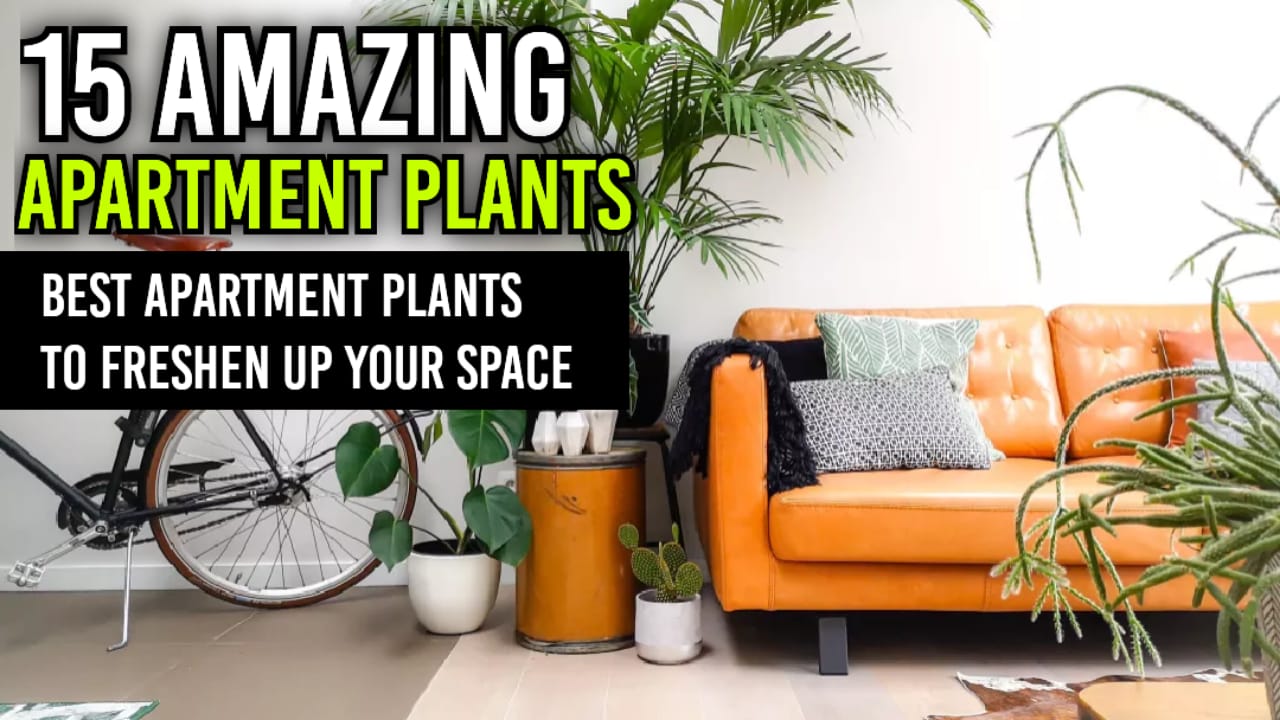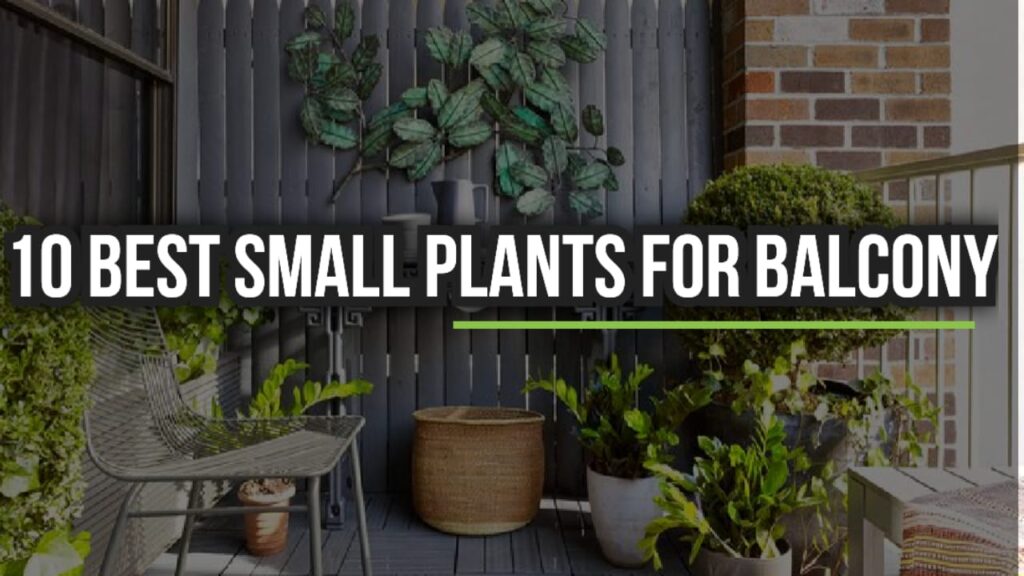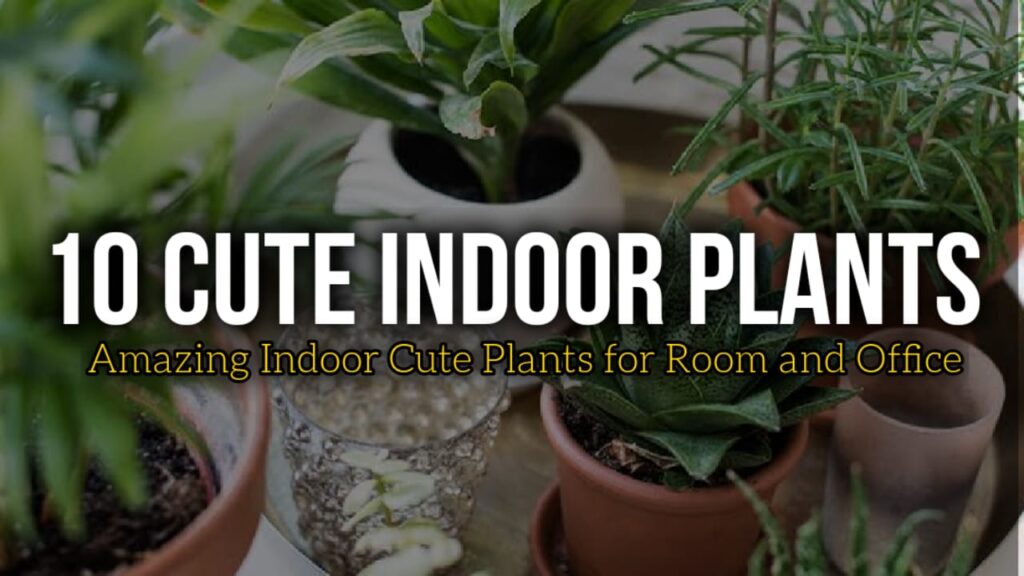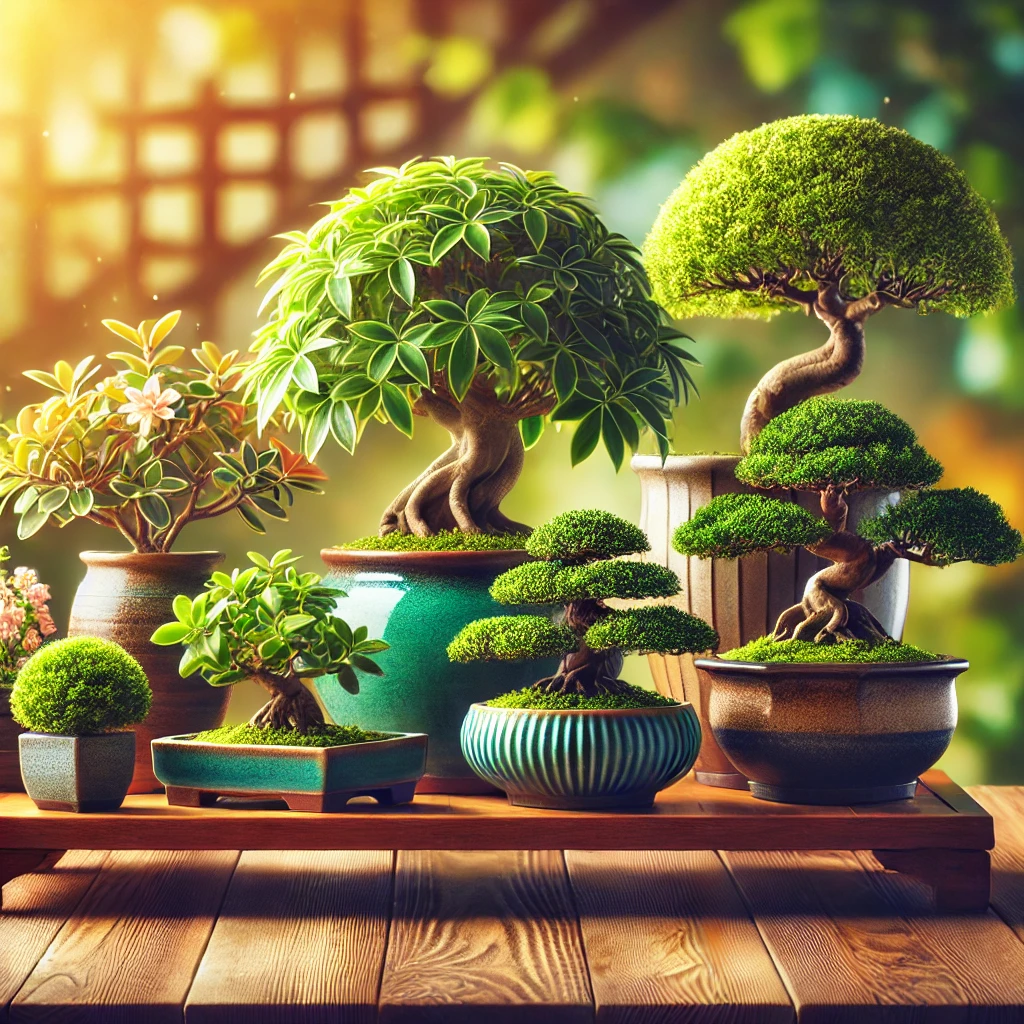Want to make your empty apartment look fresh? When it comes to enhancing your space, apartment plants are the best option.
Besides adding beauty to your apartment, apartment plants offer other amazing benefits. Among the benefits are purifying the air, reducing stress, and improving concentration.
So, interested to know which are the best apartment plants? If so, then keep reading. I’m going to share with you some amazing apartment plants that are hard to resist in this article.
Don’t worry if you are a beginner or have experience, I have listed plants for everyone. You just need to choose your favorite plant and follow the care instructions. If you do, you can rest assured that you will have a permanent companion in your apartment.
So let’s start exploring the best apartment plants
Best Apartment Plants to freshen up your Space
1. Succulents
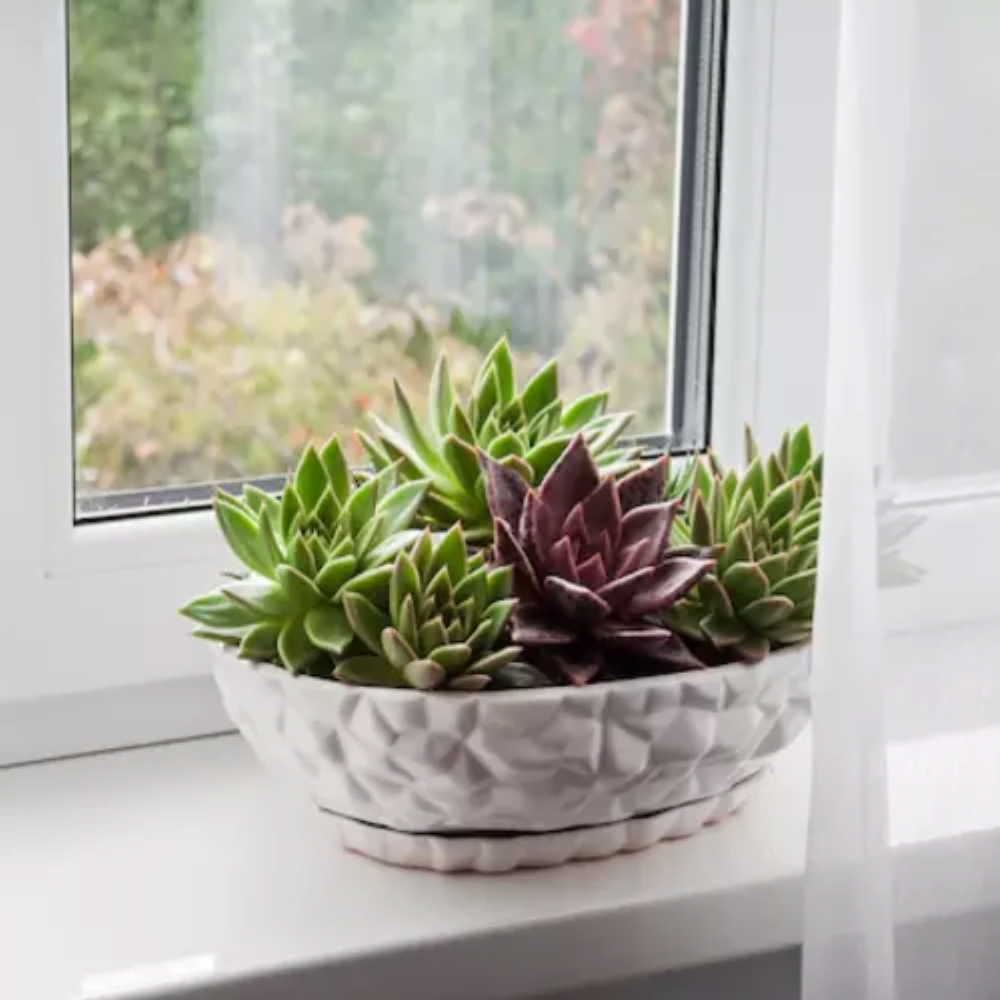
Bring this set of cute succulents to liven up your apartment. As they are succulents, they need little maintenance. A minimum quantity of water is enough for them.
Care level: Easy
2. ZZ Plant

It takes less water to grow ZZ plants than other plants. It’ll work if you neglect your plants more than overwater them. It can handle low light if it’s not in the sun, but it’ll thrive in indirect, bright light.
Care level: Easy
3. Citrus Tree
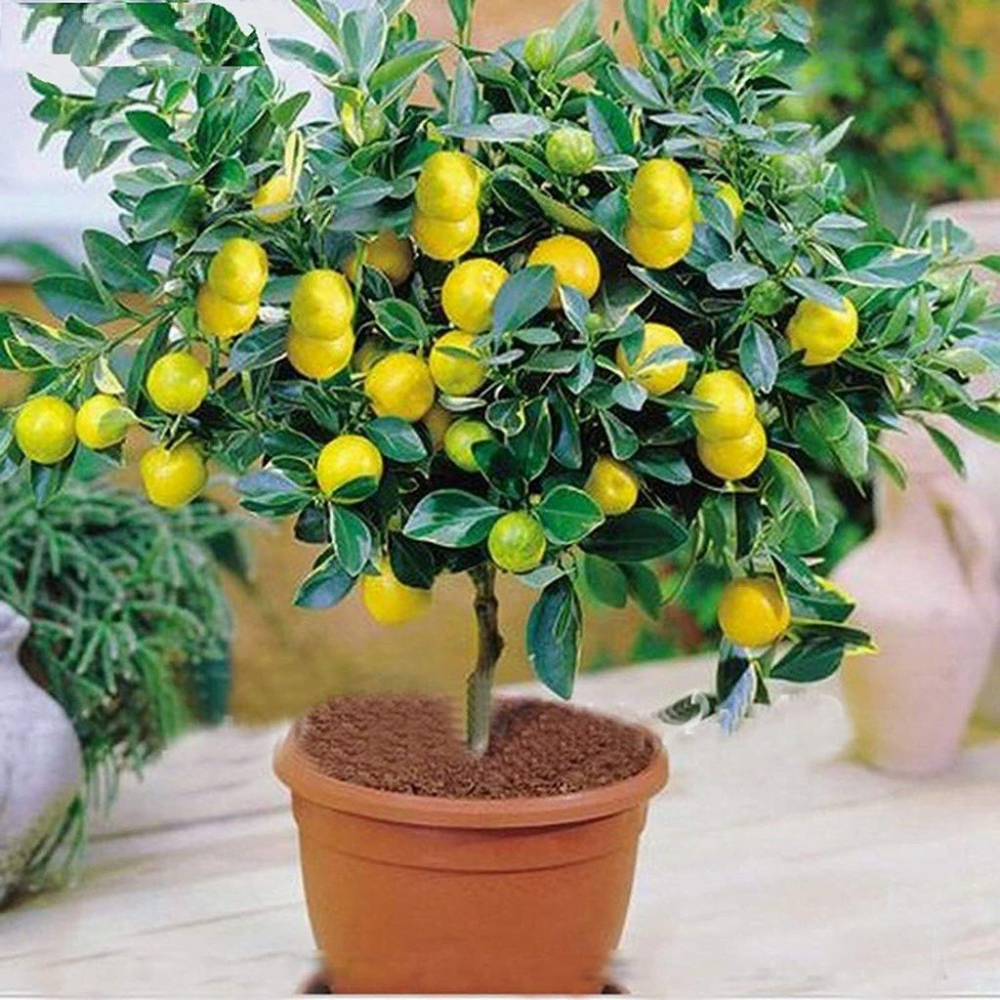
Citrus trees make you daydream about exotic summers. In the spring, your home will smell like jasmine. Light it up, water it weekly, and let it dry out between waterings.
Care level: Easy
4. String of Pearls
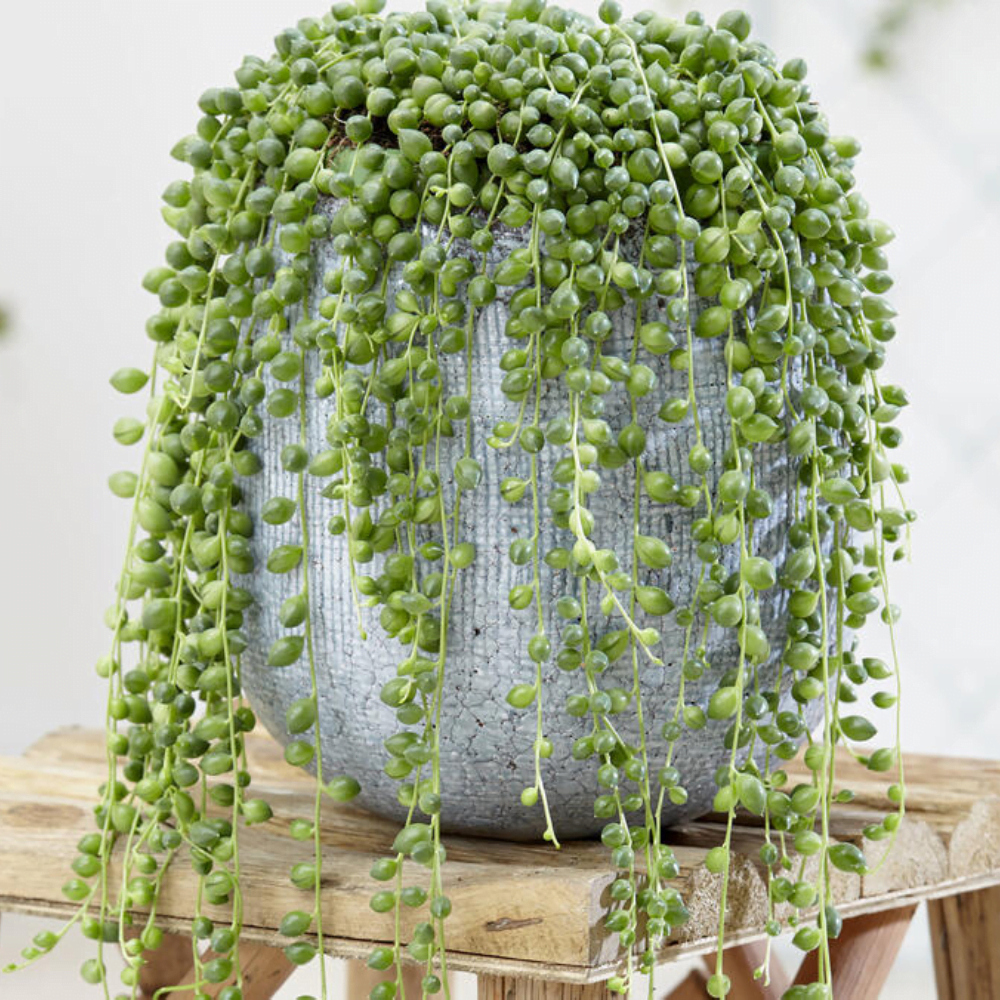
With bright, indirect light and consistent moisture, this plant will quickly produce long strands of pearls. Don’t forget to put it in a container with room for the succulent vines to grow over the sides.
Care level: Easy to Intermediate
5. African Violet
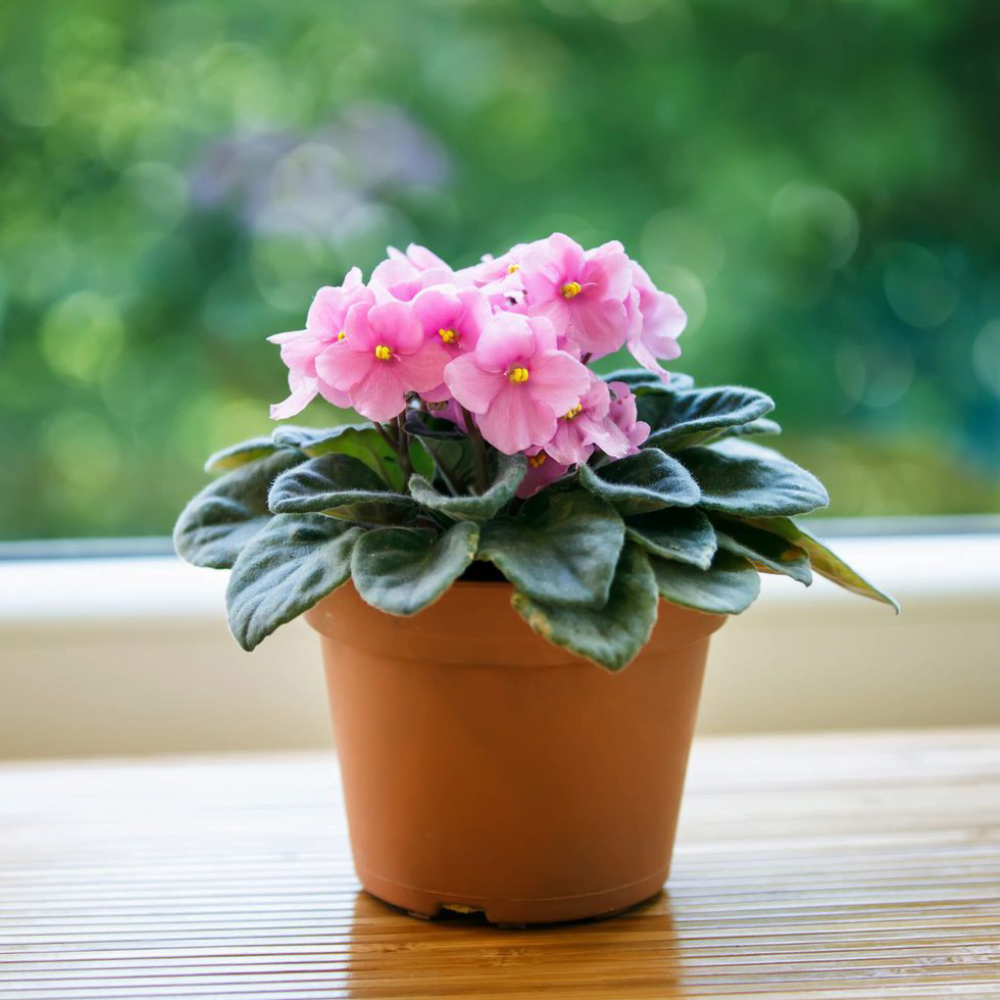
The African violet thrives indoors where it gets direct and bright light. Also, you’ll get a splash of purple wherever you display them.
Care level: Easy
6. Pilea

The distinctive circular leaves make a striking effect when arranged in a basic pot.
Pilea plant thrives in bright, indirect sunlight, however, it requires weekly misting as well as a deep watering strategy.
Care level: Intermediate
7. Sweetheart Plant

Apparently, hoya is extremely low maintenance, requiring just three to four weeks of water each, and thriving in direct sunlight. Consider it the perfect finishing touch for your window sill.
Care level: Easy
8. Bird of Paradise
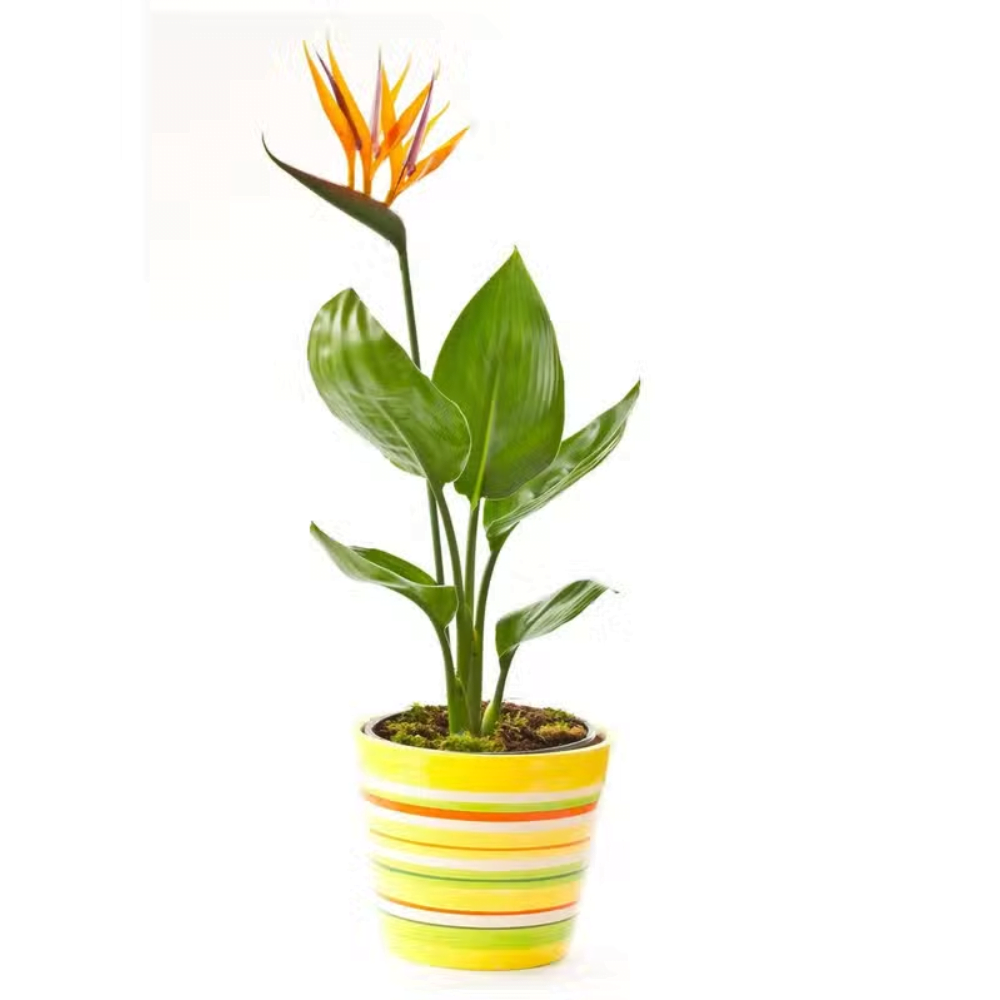
If you place this plant in a bright, sunny location, it will thrive. It can also tolerate less light. In the spring and summer, it will need frequent fertilization. Other than overwatering it, it’s fairly easy to care for.
Care level: Intermediate
9. Begonia

Begonias need completely dry soil between waterings. Strangely enough, this plant thrives in fluorescent light, so it’s great for offices.
Care level: Easy
10. Snake Plant
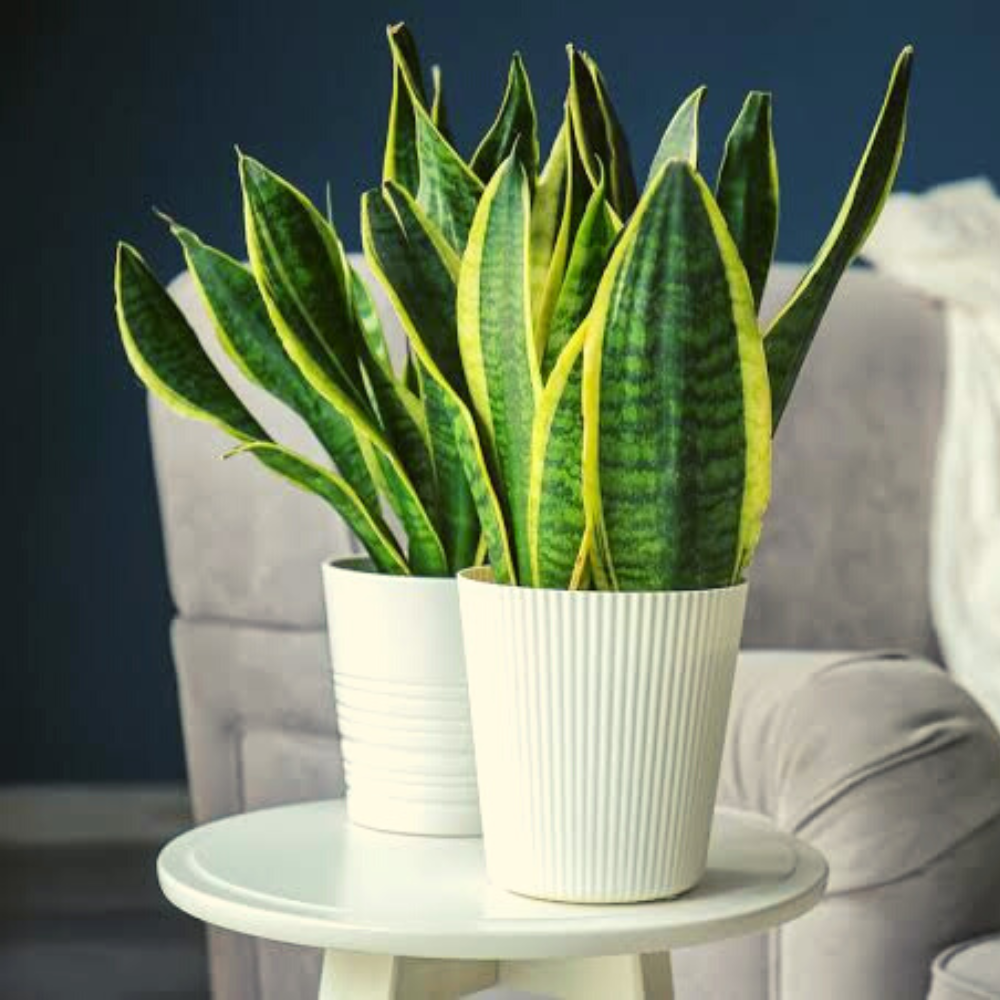
This plant, also called Mother-in-Tongue, performs best with indirect light and light watering after the soil has dried. Make a dull apartment area more interesting with a raised planter.
Care level: Easy
11. Air Plant
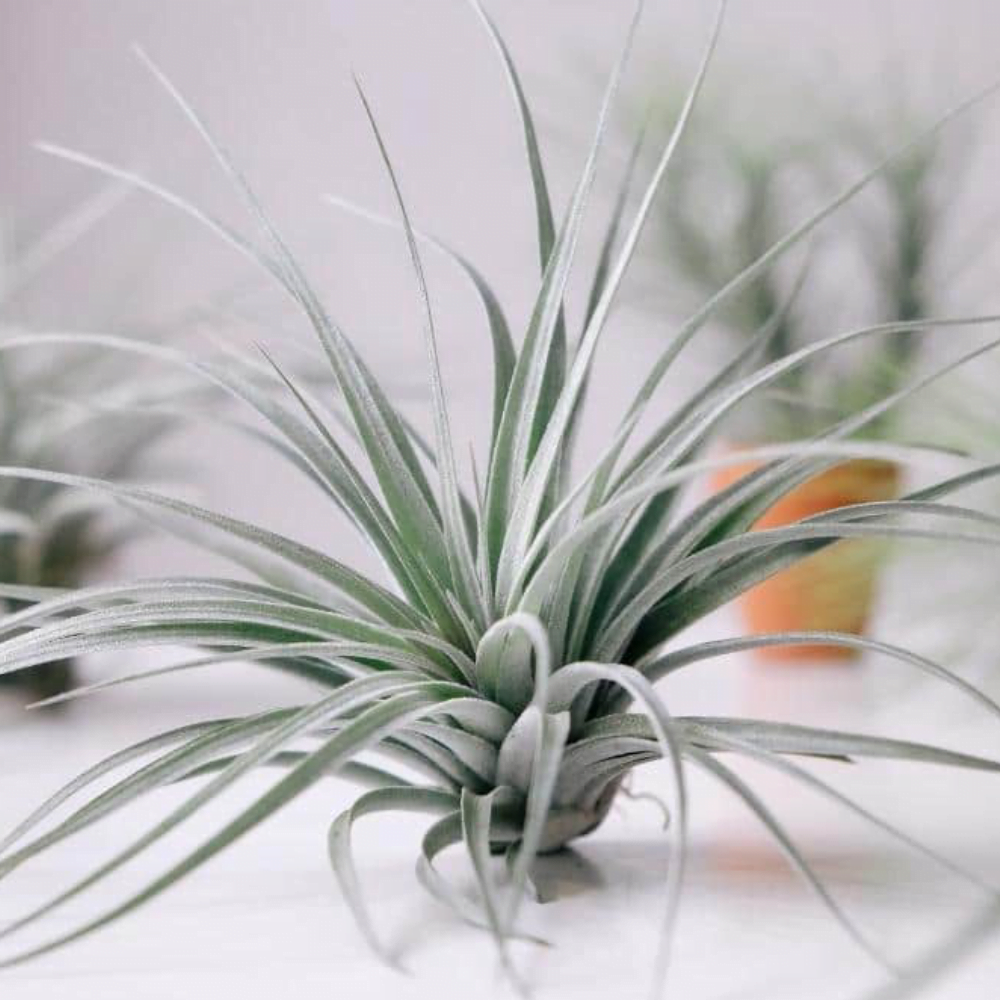
Any apartment would benefit from them. There are a lot of different types of air plants, which is wonderful if you want variety. Even though these plants can grow anywhere, you must soak them in water once a week for at least 10 minutes.
Care level: Intermediate
12. Jade Plant
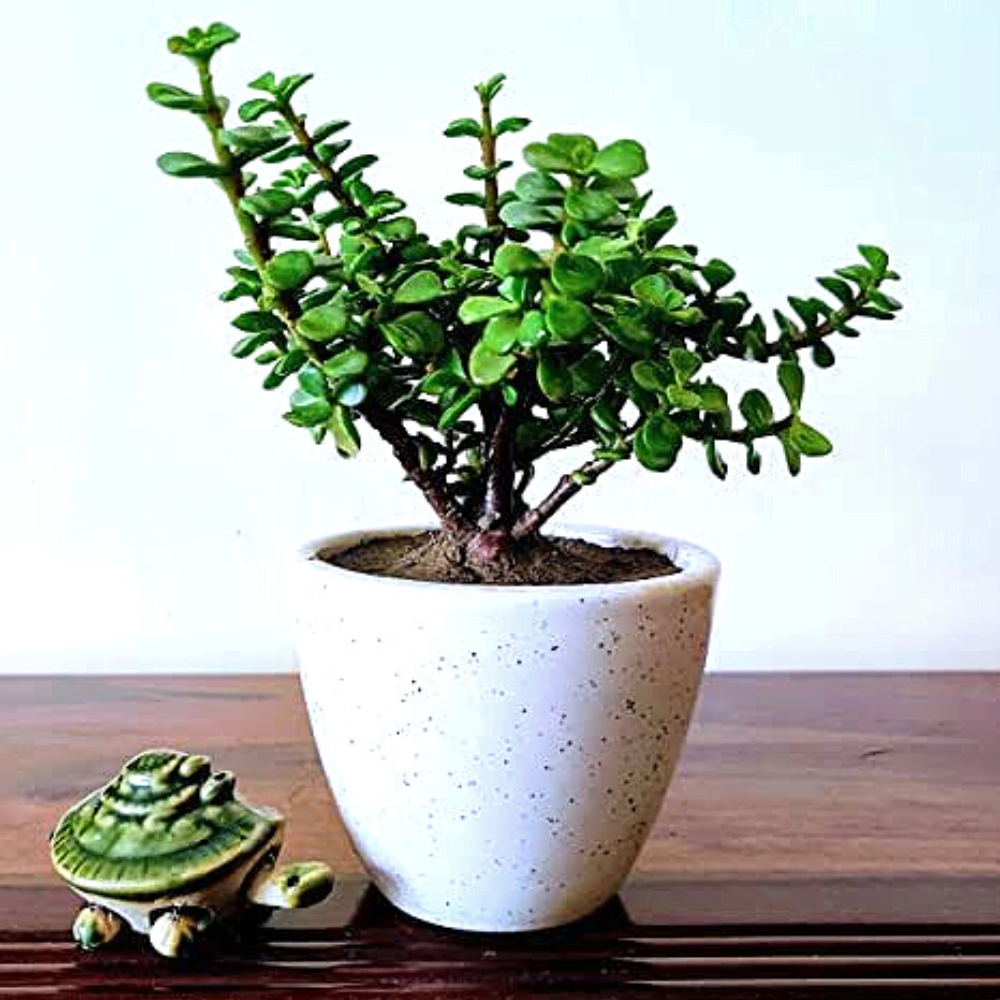
To make the deep green foliage with red tips stand out, place it in a planter that is equally colorful and stunning. As soon as the soil has dried, these plants don’t need watering and only need a few hours of medium light daily.
Care level: Easy
13. Dragon Tree

The name of this plant is exactly accurate; it has spiky leaves that rise upward and have a red border. However, intense sunlight may harm them, so give the plant a balance of sunlight and shade. The bold foliage looks fantastic in a contemporary planter.
Care level: Intermediate
14. Gardenia
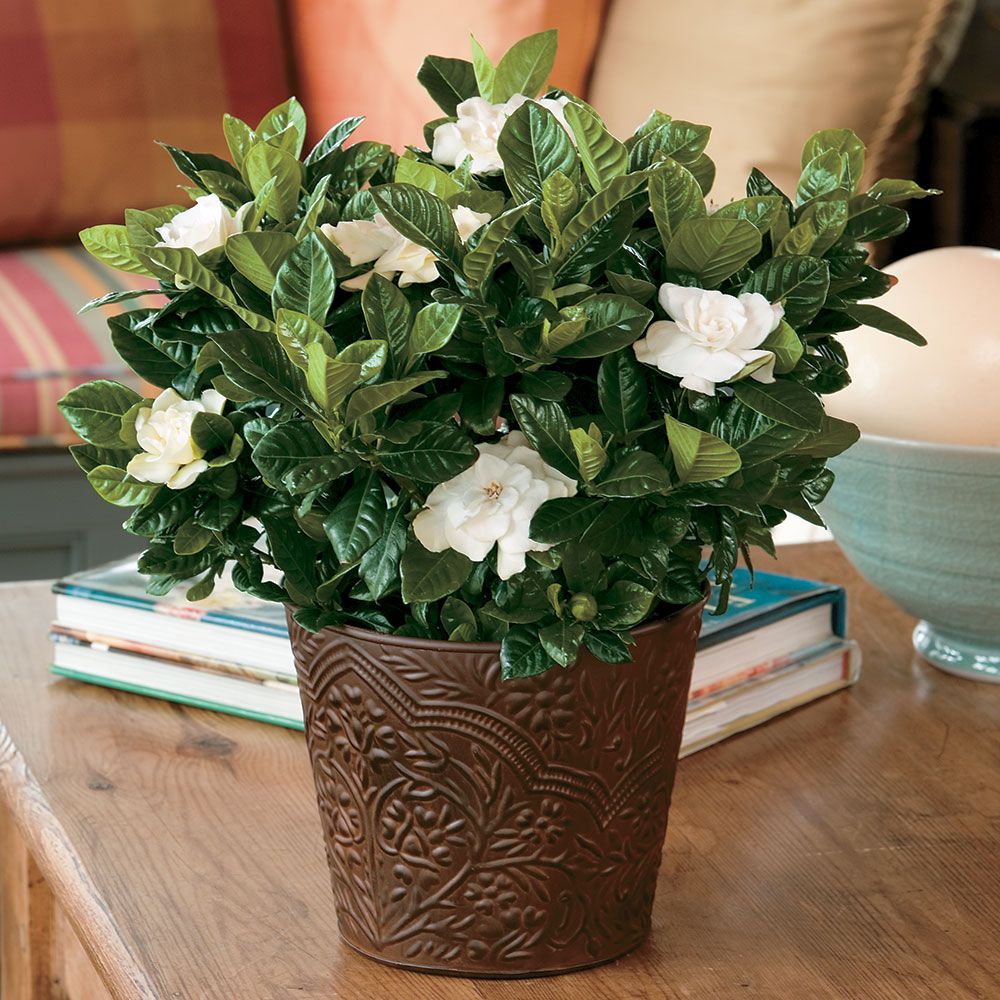
Nothing quite compares to the alluring aroma of gardenia flowers. Yet, getting blossoms to appear requires special care. Although it’s a great option for an apartment, it requires six to eight hours of bright, direct sunlight every day (growing lights won’t work).
Care level: Expert
15. Tradescantia

A Tradescantia will add a subtle splash of color to your house if you place it in a room between 60 and 80 degrees with low- to bright indirect light. Hang this rapidly expanding plant from the ceiling or mount it on a tall bookcase.
Care level: Easy
Now, let us learn about apartment plants caring guide below
Amazing Apartment Plants
1. Succulents
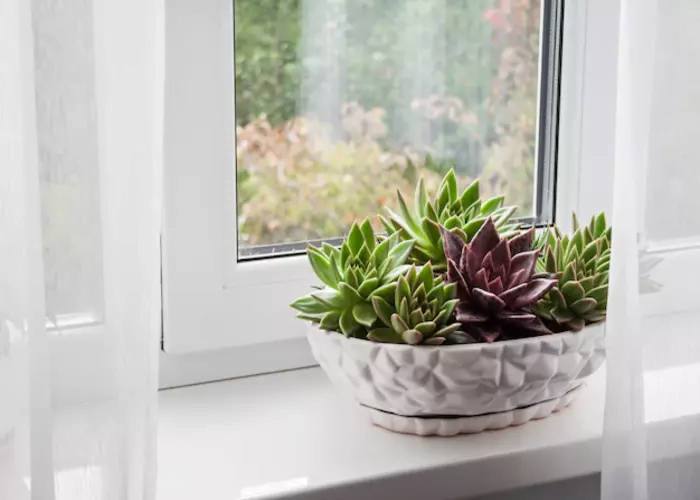
Succulents come in a wide range of shapes and colors and are available in numerous varieties. Some succulent species include aloe, jade plants, and cacti. They all can be grown easily in the apartment.
Succulents are the best apartment plants as they are durable indoor plants that require little maintenance. Moreover, they are simple to grow.
Succulent Care Instructions
- Provide at least 6 hours per day of direct sunlight. A succulent slanting toward the light is not receiving enough sunlight. Whereas, a plant with burnt leaves is receiving too much direct sunshine.
- Depending on the time of year, succulents’ water needs can differ. A succulent’s longevity is improved when its roots have time to dry out between waterings. Thus during the growing season, water it whenever the soil on the plant entirely dries up.
- Use the proper container and soil mixture. Having the proper container and potting soil can make all the difference. Make sure the container has a good drainage system.
2. ZZ Plant
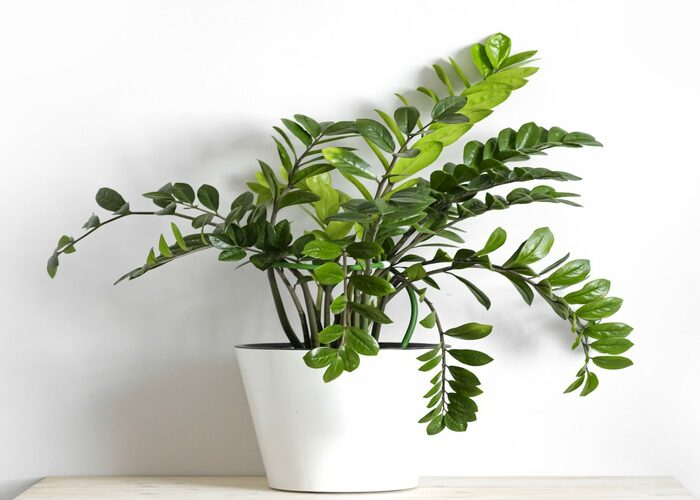
The toughness of the ZZ plant makes it ideal for forgetful gardeners. This tough plant will thrive in any light, except direct sunlight, and may go for months without water.
ZZ plant care instructions
- ZZ plant enjoys medium to strong indirect light. It can survive fluorescent illumination and dim light in a room without windows.
- Only plant after the soil has dried completely.
- There is no additional humidity needed for this plant.
- Use a liquid fertilizer once a month in the spring and summer.
- Unfortunately, ZZ plants are toxic to pets and humans. Ingesting it may cause discomfort in the tongue, and stomach as well as vomiting.
3. Citrus Tree
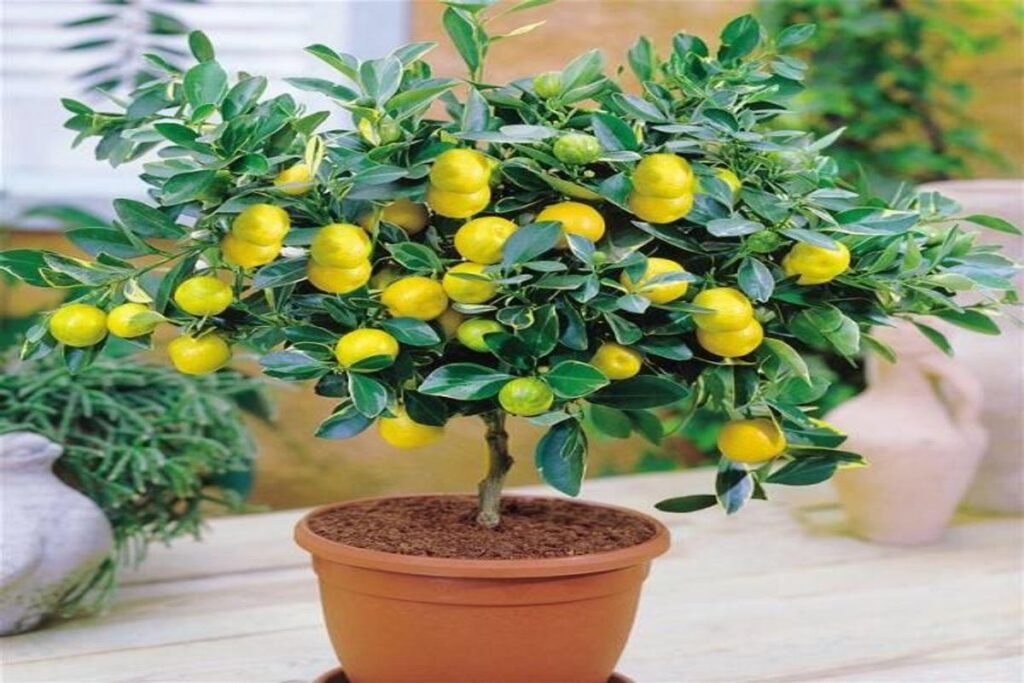
When citrus houseplants are in bloom, they add a refreshing smell, are decorative, and may produce fruit if they are grown successfully.
Most commercially grown citrus varieties are too big to grow indoors, but there are dwarf citrus varieties that are perfect for the apartment.
Citrus tree care instructions
If you can fulfill these needs, growing citrus plants is not difficult.
- Citrus plants thrive indoors at 65° days with a five to ten-degree drop in temperature at night.
- At least some of the days must be spent in direct sunlight.
- Put citrus trees outside in the summer to benefit from improved growing conditions and more light.
- For the first few days, place the plants on the north side of the house or in the shade of a tree to give them time to adjust to the sun.
- As soon as they’re comfortable being outside, make sure they have a lot of direct light.
- Before bringing them back inside at the end of the summer, keep them in a shaded area for about a week to get them adjusted to lower light.
4. String of Pearls
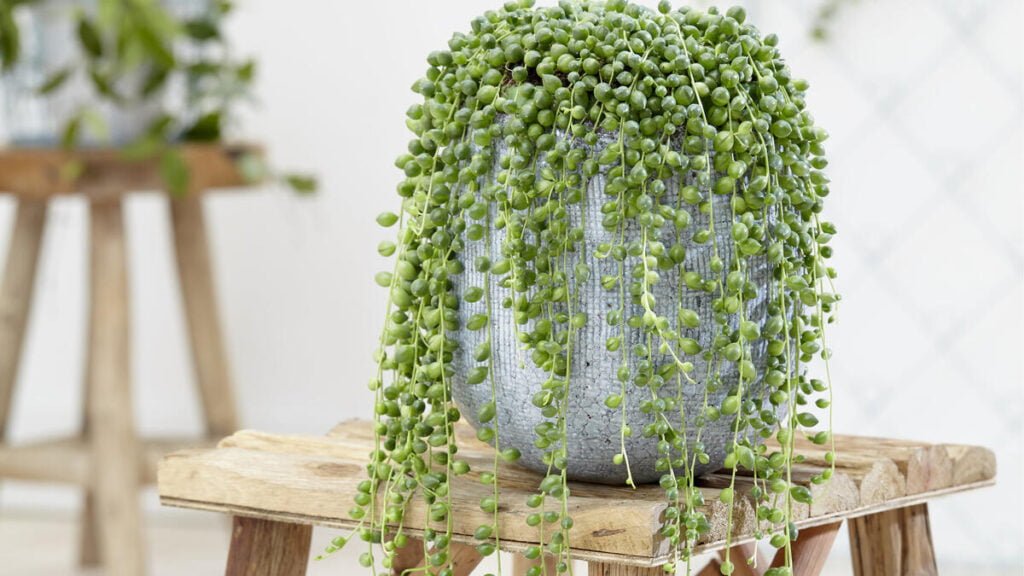
A string of pearls prefers a bright, light area, and its tendrils can grow up to one meter long, so make sure you have the perfect location for it.
It can be challenging to find a string of pearls. If you purchased your plant online, unwrap it carefully as the beads are likely to break off.
Strings of pearls care instructions
Handle string of pearls with caution as they are delicate plants and it is simple to knock leaves off. Once the top 2-3 cm of the compost has dried (stick your finger in to check).
The ‘pearls’ at the top of the plant won’t become wet or remain resting in soggy compost if you water it from below by setting it in a shallow dish and letting it soak up water. Let any extra liquid drain away. In the winter, use very little water.
- In the spring, summer, and fall, feed once a month using a liquid feed at half its normal strength. Avoid misting your plant.
- To keep the plant looking tidy, trim any stray ends.
- Strings of pearl only require repotting every few years, in the spring, due to their shallow root systems.
5. African Violet
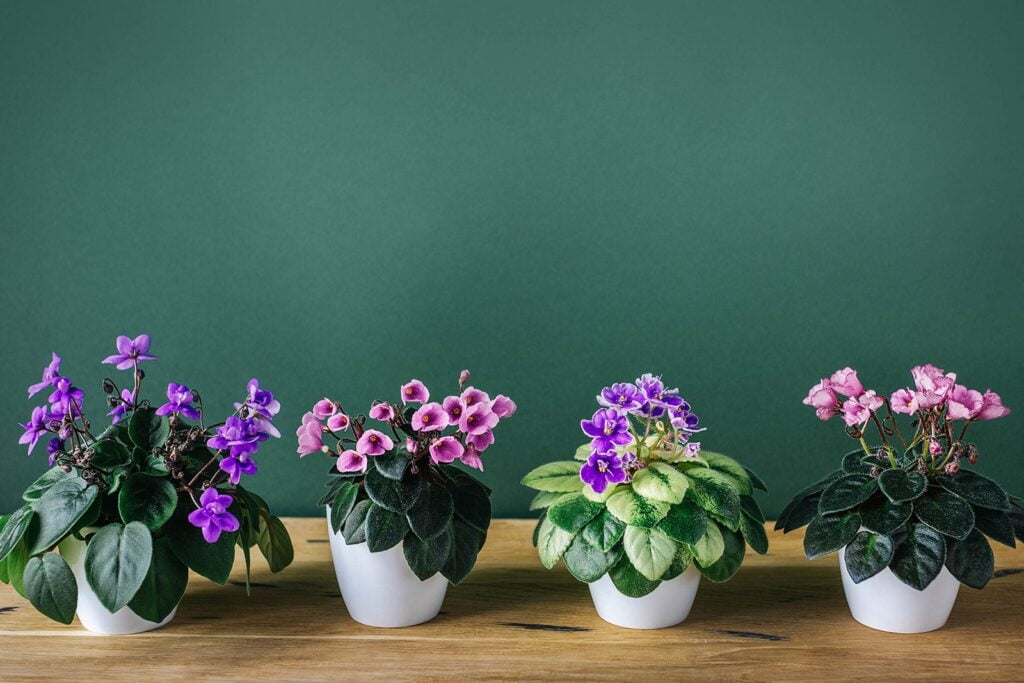
When cultivating these indoor plants, you have to strike a balance; you have to make sure that all of the different aspects are balanced.
It’s best to grow African violets in a sunny, warm, and humid environment. Leaves may get brown stains if water touches them.
To promote a stronger plant, remove dead foliage and blossoms right away. Keep an eye on the soil for excess moisture. It’ll make decay worse.
African Violet care instructions
- Bright but not direct sunlight is ideal for African violet growth. They are raised 12 to 15 inches above the foliage to grow under fluorescent lights.
- African violets require a potting mix that drains properly. Make sure the plant is never exposed to standing water for an extended amount of time. Poor drainage can lead to root rot, which causes the plant to get soggy and lose its leaves.
- Aim for high humidity and keep the soil moist with warm water. To avoid harm, only a small sprinkling of water should be allowed to come into touch with the plant’s leaves.
- African violets do best in warm, humid environments that are around 70 degrees Fahrenheit. Keep the temperature above 60 degrees Fahrenheit at all times.
6. Pilea
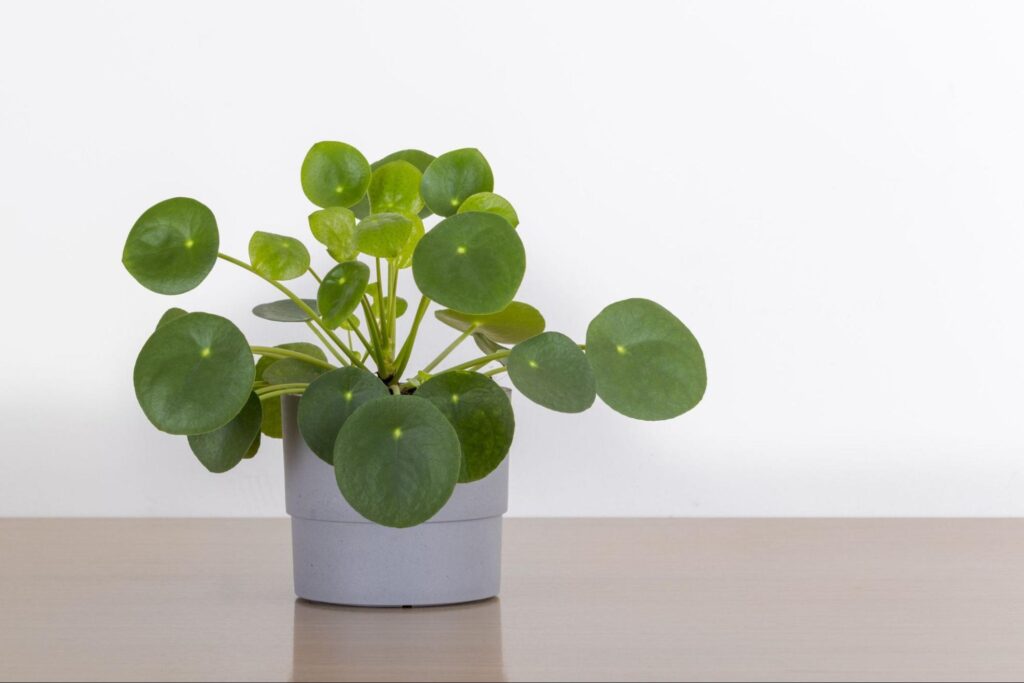
Pilea is distinguished by their vivid green, coin-shaped leaves. They are low-maintenance and ideal for novice plant owners. They thrive in dry environments, can adapt to low-light environments, and grow quickly.
Pilea care instructions
- Pilea prefers direct, strong lighting. The leaves could be damaged by direct sunlight.
- Rotate your Pilea at least 2-3 times every week to avoid it becoming unbalanced since it grows toward the sun. Lower light conditions can be accommodated by this plant, but the leaves will develop a darker green and the plant will spread out more.
- When 75% of the soil is dry on top, water your pilea. Fill the pot with water until it drains through the drainage hole at the bottom, then pour out any extra water that collects in the saucer.
- Although your pilea does not require additional humidity, it will benefit from an occasional, generous misting.
- Normal household temperatures of 65 to 75 degrees will make your pilea the happiest. In the winter, be careful not to place your pilea too close to the heating vents, since it can start to drop leaves.
7. Sweetheart Plant

A climbing, twining epiphytic plant called Hoya kerrii uses its aerial roots to cling to trees as it grows. The name “sweetheart hoya,” “Valentine hoya,” and “heart leaf hoya” are all used to describe this species of its heart-shaped leaves.
The plant can store water during dry spells thanks to its large, succulent leaves. Smooth and growing in opposing directions on long vines, the leaves have a little initial size when they first appear.
Hoya care instructions
- Most Hoyas like bright, indirect light. It’s okay if there’s some direct sun.
- When the soil is dry, water as soon as you see the leaves “pucker.”
- Hoyas need more water in the spring and summer when they’re active.
- To prevent rot, withhold water in the winter.
- Use a potting medium with good drainage that is coarse.
8. Bird of Paradise
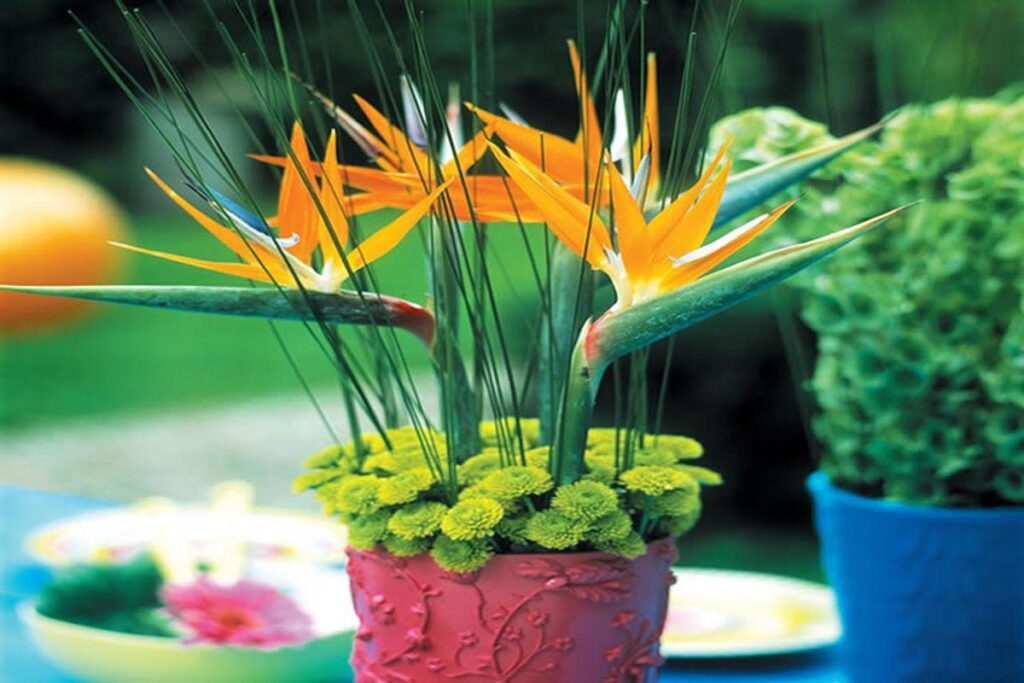
Large, relatively simple-to-grow plants called birds of paradise add a dramatic tropical flair to any indoor setting.
Even inside, with the right care, a bird of paradise can reach heights of over six feet. In your home, its broad, arcing leaves make a striking, beautiful statement.
Birds of paradise care instructions
- It thrives in bright indirect light up to the full sun. However, not appropriate for dim lighting.
- Water every one to two weeks, letting the soil dry up in between applications. Pro tip: Water that has been filtered or left out overnight before use is beneficial for birds of paradise.
- Normal room humidity would do, but if at all feasible, the Birds of Paradise would prefer humid environments. To increase the humidity inside, think about adding a fine-mist mister or humidifier.
- Most houseplants enjoy temperatures between 65°F and 85°F. It’s ideal to keep the temperature above 60°F.
- Use a well-draining potting mix for the soil. When more soil aeration is required, combine elements like perlite or lava rocks.
9. Begonia
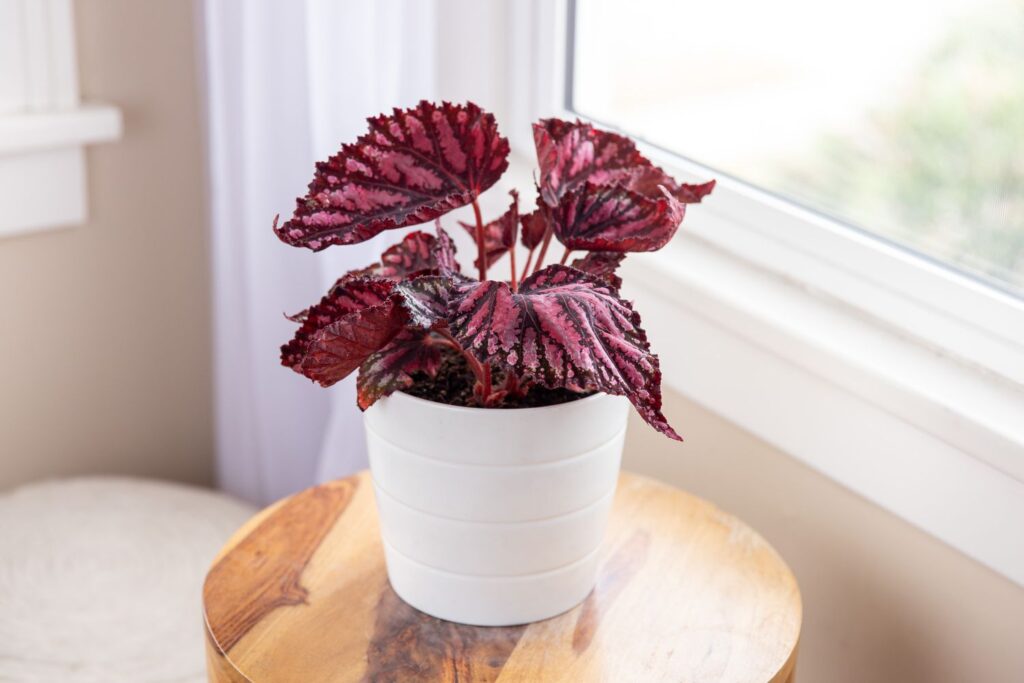
About 1,300 species of annuals, perennials, shrubs, and climbers are included in the genus Begonia. Their thick stems serve as a distinguishing feature, and they are typically grown for their spectacular flowers or vibrant leaves.
They are often simple to cultivate plants that will keep your garden interesting all through the growing season.
Begonia Care instructions
- All begonias prefer evenly moist, well-draining soil that has been supplemented with organic matter.
- During the growing season, use a balanced water-soluble fertilizer once a month for general growing goals. Use a fertilizer that contains more nitrogen for plants that are grown just for their foliage, such as angel wings.
- For plants to be healthy, regular watering is crucial. The soil should always be moist, but not soggy, as this might lead to root rot. To keep the leaves dry and ward off fungal diseases and leaf spots, water the plant’s base.
- Begonias are capable of spending the winter indoors. Place them near a window that receives bright, filtered light and raises the humidity.
- Overwatering and wet soil can lead to stem rot and rhizome rot.
10. Snake Plant
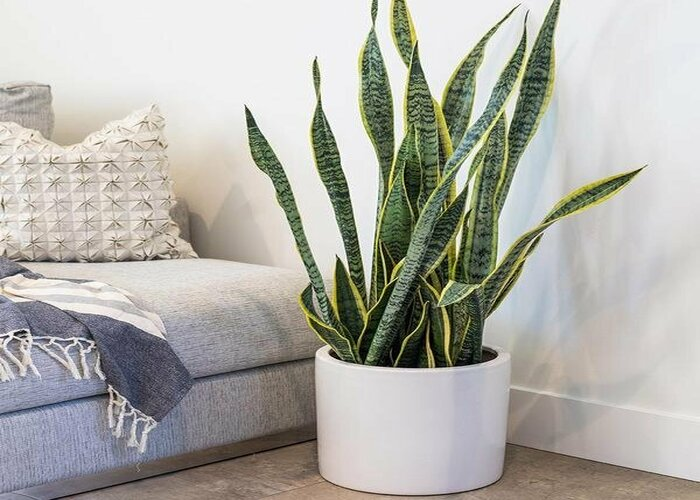
One of the simplest houseplants to care for is the snake plant, sometimes referred to as “Mother-in-Tongue” Law’s and Sansevieria. It’s a good succulent plant for beginners because it’s highly tolerant.
Snake Plants care instructions
- It’s easy for dust to accumulate on the broad, flat leaves; wipe them with a damp cloth if needed.
- In ideal circumstances, snake plants grow quickly and may require dividing every year.
- In the spring, split and replant. Remove a part with roots and leaves and put it in a pot with potting soil that drains properly.
- A snake plant may occasionally flower if it is confined to a pot.
11. Air Plant

Tillandsia is the name that plant specialists have given to air plants, often known as air ferns or tillys. The family Bromeliaceae includes 730 species of evergreen perennial flowering plants. Anywhere from woods and mountains to deserts and swamplands, air plants can survive.
Air plants care instructions
- In their natural habitat, air plants typically flourish when they are shaded or beneath the canopy of other plants and enjoy filtered sunlight. The optimum setting is inside or adjacent to a window. Artificial lighting is a good alternative. Keep your air plants as near to the artificial light as possible.
- All of the nutrients needed by air plants are obtained from organic materials in precipitation and airborne dust.
- The majority of air plants thrive in a range of 50 and 90 degrees Fahrenheit. They won’t endure a frost overnight.
12. Jade Plant

These apartment plants were the classic indoor plant that grew in rope plant hangers in the 1970s. Thankfully, jade plants have never really gone extinct, and macramé is again popular once more. They are among the easiest apartment plants to grow, and who doesn’t enjoy something simple?
Jade plant care instructions
- Grow indoors in extremely bright light.
- Use Miracle-Gro® Cactus, Palm & Citrus Potting Mix to plant jade plants.
- When the top 1 to 2 inches of soil are completely dry, water.
- When watering jade plants after a month, feed them with Miracle-Gro® Succulent Plant Food.
- Remove branches that are withered or dead.
- By cutting off pieces, you can put them in the ground to grow new jade plants.
13. Dragon Tree

A dragon tree, or Dracaena marginata, has green sword-like leaves with red edges. A great apartment plant for household gardeners, the eye-catching spiky tree is easy to care for, drought-tolerant, and nearly indestructible.
The plant grows slowly and blooms in spring (though it rarely flowers indoors).
Dragon tree care instructions
- Make it clean. Those lofty, straight leaves tend to collect dust.
- Keep it brief. This unusual indoor plant grows slowly and finally reaches a height of 6 feet (1.8 metres)
- Spring or summer is the best time to prune it back. You can cut the cane at any height. After a few weeks, it’ll start growing new leaves. Make sure your pruners are clean and sharp to avoid infection.
- It’s good to put a young plant on an indoor plant stand. With its tall, spiky leaves on a pedestal, dragon trees look incredible. If you want contrast, pair it with trailing and shrubby plants.
14. Gardenia
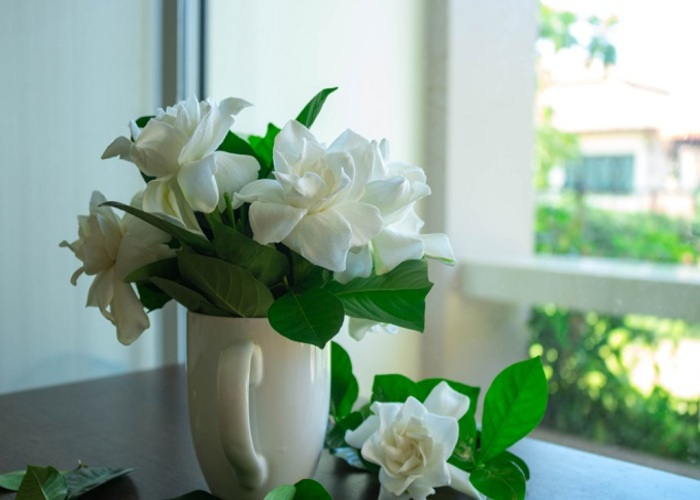
Gardenia plants have lovely, fragrant, waxy, white flowers and glossy, green leaves, but they are highly fickle and won’t tolerate neglect. These apartment plants require highly particular environmental factors for growth, including temperature, humidity, and light.
The secret to successfully growing a Gardenia plant indoors is to make an effort to as closely resemble the outdoor habitat as you can.
Gardenia care instructions
- For at least 6 to 8 hours each day, a gardenia plant needs extremely intense light. With the changing of the seasons, be prepared to relocate your gardenia. If there isn’t enough natural light for your gardenia plant to thrive, grow lights can be required.
- Before watering, let the soil’s top 2-3 inches dry out. Brown stains on leaves, root rot, and unopened buds are all effects of overwatering. A gardenia plant loses its green leaves when it isn’t given enough water.
- It is crucial to maintain the proper temperature. Gardenia plants prefer temperatures between 65° and 70°F (18.3° and 21.2°C) during the day and 55° and 65°F (12.8° and 18.3°C) at night. The buds must have cool nights for them to set. If the temperature rises beyond 70°F (21.1°C), gardenia buds begin to fall off.
15. Tradescantia
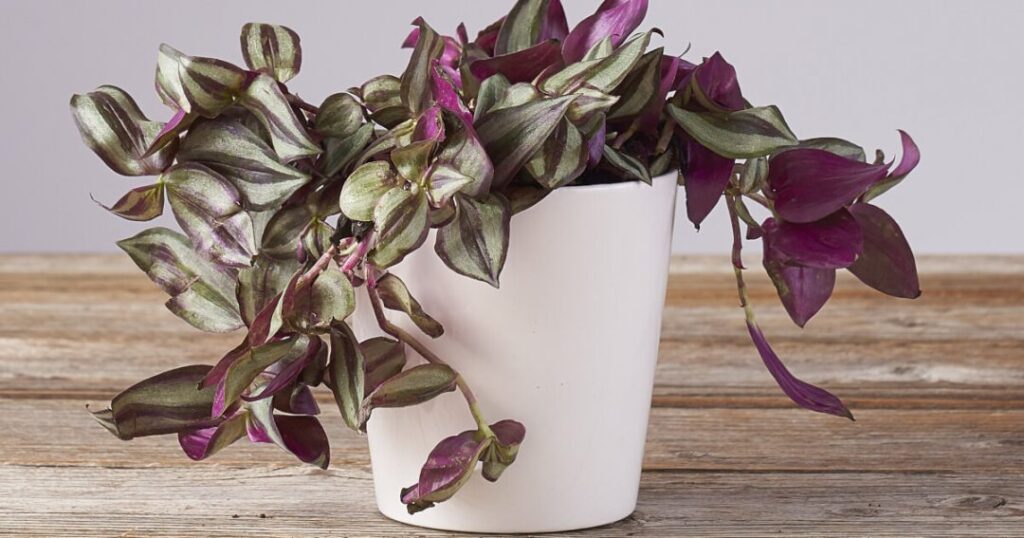
A traditional easy-care houseplant with variegated olive and silver leaves and purple undersides, Tradescantia zebrina is the best apartment plants
You can also get a variety of purple leaves on both sides with silvery green stripes. A stem that is soaked in water or is exposed to the soil will quickly root.
Tradescantia care instructions
- Use a potting mix that drains effectively.
- Put it in a hanging basket to shine.
- Give it a lot of diffuse light.
- Avoid letting Tradescantia become overly dry in between waterings.
- Give it plant food to promote it.
- By putting cuttings in water or soil, more Tradescantia can be grown.
How to choose best apartment plants for beginner?
Choosing the best apartment plants is enjoyable, but take your time. Don’t purchasee without first carefully examining your home’s growing conditions and selecting the ideal plant match for them, if applicable.
For additional information on how to keep your plants happy and healthy, visit our guide to fertilizing indoor plants. Also, keep in mind that, despite your best efforts, houseplants occasionally fail. Vow not to be hard on yourself if you accidentally destroy a few plants along the way.
Over the years, I’ve undoubtedly contributed to a few unintentional houseplant deaths, as do the majority of indoor gardeners. Take it easy. Next time, try a new plant and take advantage of the many advantages of adding some greenery inside. Also, keep in mind that air plants are a fantastic alternative.
Conclusion
You can transform any apartment with these 15 amazing apartment plants. You have a lot of options to choose from. Plants such as snake plants and ZZ plants are best suited to apartments with low light levels.
Alternatively, if you are looking for a fragrant apartment plant, gardenias will surely delight you. A citrus plant is also a good option.
If you like hanging plants, strings of pearl and hoya are a good choice. The pilea plant, the sweetheart plant, and the air plant are small and adorable apartment plants.
No matter what apartment plants you choose, make sure you follow the instructions given in the article. Please share this article with your family and friends who will be moving to new apartments. They would greatly appreciate your help.
Related Articles
- 10 Best Indoor Plants for Dark Rooms
- 10 Best Liquid Fertilizer for Indoor Plants
- 10 Best Plants for Restaurants That Will Enhance Your Restaurant’s Atmosphere
- 10 Best Small Plants for Balcony in India
- 10 Best Soil for Indoor Plants 2023 | Potting Soil For Indoor Plants No Bugs
- 10 Cute Indoor Plants for Room and Office

